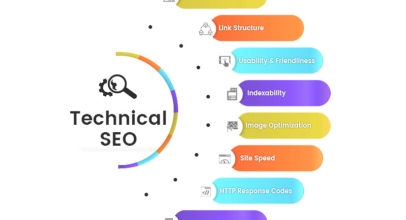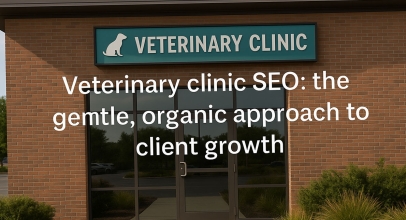- Step 1: Competitor Audit, or Knowing Your Rivals Inside Out
- Step 2: Keyword Selection - The Climb to the Summit
- Step 3: On-Page Optimization - The Foundation of Success
- Step 4: High-Quality Content - The Magnet for Users
- Step 5: External Optimization - They Talk About Interesting Things
- Step 6: Buying Backlinks - Building Combat Mass
- Step 7: Social Signals - Project is Alive!
Currently, an increasing number of entrepreneurs are opting for self-promotion in the field of SEO. Some have had a negative experience with SEO specialists, others have budget constraints, and some simply want to understand the principles of search engine operation. The reasons may vary, but one thing is important: by knowing the specifics of your business, you can avoid serious mistakes, maximize benefits, and minimize expenses.
We have prepared a step-by-step guide that will help you promote your website independently, practically for free, and, most importantly, see pleasant results in the near future. If you are ready to invest your time in your project, keep reading.
Step 1: Competitor Audit, or Knowing Your Rivals Inside Out
To independently propel your website to the top of search engine results, it's essential to outperform your competitors, even if just a little. They can provide insights into how to achieve this improvement. Without seeing and knowing your competitors, you won't understand whom you need to surpass and the techniques to accomplish that. To address this, regularly conduct a competitor audit.
Finding Competitors: Create a list of competitive companies that rank in the top 10 in Google search engine results. To do this, open the "Incognito" mode in your browser and enter a search query relevant to your business – the one potential customers might use to find you. Exclude marketplaces and giant companies from your main competitors. Also, disregard competitors promoting themselves through paid advertisements.
Evaluating Competitors: To understand how to elevate your website independently in Google search, analyze competitors' resources based on various indicators. The goal is to gather statistics, assess solutions, identify drawbacks to avoid, and note advantages that can complement your website successfully. Evaluation checklist includes:
- Usability: appearance, user-friendliness, interesting features, etc.
- Site structure: sections, subsections, filters, content.
- Age of the resource (check using web.archive.org).
- Monthly visitation statistics (evaluate using similarweb.com).
- Number of pages indexed by Google (enter "site:example.com" in the search bar, where example.com is the analyzed site's address).
- Donor sites containing external links to the website.
- Activity on social networks.
Record the obtained information in an Excel spreadsheet for further comparison with your site.
As an example, one successfully promoted project on the Internet is the beauty salon "Derma Glow by Beata" website - https://faciallaserhairbybeata.com/, located in Brooklyn, New York. The salon offers services such as Carbon Laser Facial, Oxygen Infusion, BioRePeel, BBGlow, Micro-needling, Nano-needling, Detox Facial, and Laser Hair Removal. An audit and keyword selection were conducted for each service.

Step 2: Keyword Selection - The Climb to the Summit
One of the most common mistakes made by SEO novices in independent promotion is focusing solely on high-frequency queries. When creating a semantic core, it's crucial to consider both high, medium, and low-frequency keywords, distributing them across pages based on relevance and the problem the user is trying to solve. Additionally, promoting through low-frequency queries requires much less time and financial resources, yet can bring highly targeted traffic and yield results in the near future.
You can create a semantic core for your website's promotion much better than an SEO specialist, as they may not fully understand the specifics of your business. Let's break down the entire process step by step:
- Use tools like Serpstat or Google Keyword Planner, along with search engine suggestions, to identify the primary keywords related to your theme.
- Supplement the list with queries that your competitors are targeting; you can find this information in Serpstat.
- Remove irrelevant queries, such as those related to products or services you don't offer, those containing the word "free," mentions of competitor sites, and duplicates.
- Distribute keywords across pages based on the user's intent. It is recommended to do this manually rather than relying on automated programs to avoid potential mistakes in the future.
Step 3: On-Page Optimization - The Foundation of Success
To promote your website in 2024, it's essential to:
- Develop a clear and comprehensible site structure based on the semantic core.
- Craft and add Title and Description for each page.
- Include H1 to H3 headers on each page.
- Ensure unnecessary elements are blocked in the robots.txt file.
- Add and verify the presence of links to all promoted pages in the sitemap.xml file.
- Adapt the website for use on all types of devices.
- Check the display settings and functionality of the site on major browsers.
- Minimize the site's loading speed (you can check using services like Google PageSpeed Insights or GTmetrix.com).
Step 4: High-Quality Content - The Magnet for Users
Content is everything visible that fills your website. Users see this content, deciding whether to stay on the site or move on, potentially leaving the resource forever. Types of content include:
- Text (informational, navigational, promotional, and SEO text).
- Video.
- Audio.
- Infographics.
- Images (photos, pictures, screenshots).
- Animated (GIFs).
Diversity in content attracts users with different preferences. Therefore, we recommend not limiting yourself to just one type, complementing it with new options. However, quality is paramount. Quality content is not about the quantity of words or shades. To ensure your site attracts rather than repels users and search engines, make sure your content is:
- Unique.
- Natural-looking and easy to read.
- Well-written.
- Adapted for various devices.
- Aesthetically pleasing.
- Expert material that addresses questions and solves problems.
- Well-structured.
- Optimized for search queries.
If you wish, you can write the texts to promote your website yourself. And remember: you are not selling yourself but the content itself. That's why it's crucial to dedicate maximum attention to it.
Step 5: External Optimization - They Talk About Interesting Things
When we talk about external optimization, we refer to the quantity and quality of external links pointing to your site from other resources. If nobody is talking about your company or product, and there is no information from users, partners, bloggers, or social media, it means your company and its website are not in the spotlight. Search engines are unlikely to rank sites at the top that lack references from various external sources if your competitors have excelled in this aspect.
In one of our articles, we've compiled 50 free methods for obtaining external links that you can use and post on your site independently. Search engines will undoubtedly recognize and evaluate your popularity in the network based on these references.

Step 6: Buying Backlinks - Building Combat Mass
In addition to free links, there's another excellent way to promote your site independently and outpace key competitors in the race for a top position in search engine results - purchasing links. However, not all bought links are equally beneficial. To save time, resources, and nerves, it's recommended to use only reputable platforms for buying paid links.
Moreover, you can independently search for donor sites with similar themes, from which links would be logical and effective in terms of attracting targeted traffic.
Step 7: Social Signals - Project is Alive!
The popularity of social networks hasn't escaped search engines, which give preference to sites with active groups and communities. The more followers, likes, and comments your communities gather, and the more links to them on your site, the more appealing your project will look to search engines. Social signals, from the perspective of search engines, include:
- Links to the site on social networks.
- Likes and dislikes.
- Reposts.
- Joining communities.
- Community activity.
You can create a social media page yourself. It's easy, completely free, and, most importantly, it contributes to the SEO promotion of your website. Even companies dealing with specific products should not skip this step.










